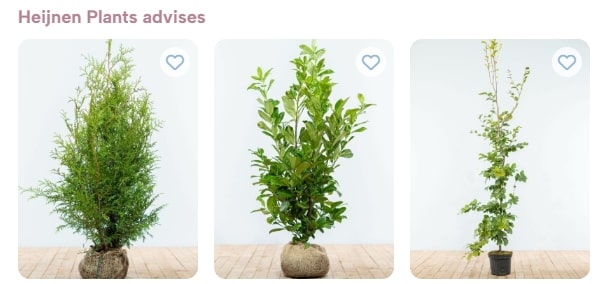Hedge Plants for Your Garden Oasis
Creating a garden oasis begins with selecting the ideal hedge plants. Yew (Taxus) presents dense, evergreen foliage that thrives in well-drained, fertile soil enriched with organic matter. Consistent trimming maintains its bushiness, while Yews offer wind protection and noise reduction, vital for a tranquil outdoor space. Ensuring proper sunlight, thorough watering, and optimal spacing (two to three plants per meter) fosters robust growth. Tailored pruning from late summer to early autumn promotes health and aesthetic appeal.
With these insights, your garden can transform into a lush haven, offering both beauty and serenity. Visit the website.
For a comprehensive guide on soil preparation, maintenance, and trimming techniques, these tips can be instrumental in achieving your vision.
Key Takeaways
- Yew (Taxus) is perfect for creating dense, evergreen hedges that maintain their lush, green foliage throughout the year.
- Boxwood (Buxus) offers compact, orderly growth, making it ideal for formal garden designs and topiary.
- Privet (Ligustrum) is known for its rapid growth and resilience, making it suitable for a variety of garden conditions.
- Holly (Ilex) boasts glossy, spiky leaves and vibrant berries, adding both texture and color to your garden.
- Beech (Fagus) retains its coppery-brown leaves during winter, providing a unique and striking seasonal appearance.
Popular Hedge Plants
Among the most sought-after hedge plants, the Yew (Taxus) is renowned for its dense, evergreen foliage and remarkable longevity. This resilient plant flourishes with the right soil preparation, necessitating well-drained, fertile soil to develop strong roots. Gardeners are advised to incorporate organic matter to improve soil structure and nutrient content.
Seasonal pruning is essential for maintaining the Yew’s desired shape and density. It should be conducted from late summer to early autumn to ensure healthy growth and prevent frost damage. Regular trimming promotes bushy growth, keeping the hedge thick and visually appealing.
Advantages of Hedges
Incorporating hedges into garden design presents a cost-effective, visually appealing alternative to traditional walls and fences. Hedges offer numerous environmental benefits such as wind protection and noise reduction. They enhance a garden’s aesthetic allure by introducing natural textures and colors that evolve with the seasons.
Beyond their visual charm, hedges serve as effective sound barriers, creating a more tranquil outdoor space. Moreover, hedges contribute to microclimate regulation by moderating temperature extremes and enhancing air circulation.
Their cost-effectiveness is notable, as hedges demand lower initial investment and maintenance compared to hardscape options. Overall, integrating hedges into garden design seamlessly blends functionality with beauty, making them a superb choice for any garden sanctuary.
Planting Tips
Effective planting techniques are essential for hedge plants to quickly establish and thrive in their new environment. Begin with comprehensive soil preparation: remove weeds, loosen the soil, and incorporate compost to enhance root growth. Ensure the site meets the specific sunlight requirements of the chosen plant species. Position the plants in a trench, spacing them 2 to 3 per meter to promote dense growth. Water thoroughly after planting and adhere to a consistent watering schedule to support establishment.
| Key Factors | Details | Tips |
|---|---|---|
| Soil Preparation | Remove weeds, loosen soil, add compost | Promotes robust root development |
| Sunlight Requirements | Ensure proper light levels | Dependent on plant species |
| Watering Schedule | Deeply water after planting, maintain regular watering | Crucial for initial establishment |
| Pruning Techniques | Regular trimming to maintain shape and health | Avoid cutting into old wood |
| Spacing | 2 to 3 plants per meter | Encourages a dense hedge formation |
Maintenance Guidelines
Maintaining healthy hedge plants requires consistent care, including watering, fertilizing, weeding, and trimming practices. Pruning techniques should be tailored to each plant species to ensure optimal growth and shape.
Seasonal adjustments in watering and fertilization, especially in spring and summer, are essential for vigorous growth. Regular pest inspections and treatments are crucial to prevent infestations that could harm the hedges. Fertilizers high in nitrogen and phosphorus support lush foliage and strong roots.
Consistent weeding is necessary to minimize competition for nutrients. By following these guidelines, gardeners can ensure their hedges remain vibrant and robust, enhancing the beauty and functionality of their garden oasis.
Trimming Instructions
Trimming hedges effectively involves cutting new growth during the summer and pruning back into the older wood during winter to encourage dense foliage.
Seasonal pruning is essential for maintaining the health and aesthetic appeal of hedge plants. Summer trimming stimulates the development of new shoots, while winter pruning reinforces a robust structure by removing older wood.
Employing topiary techniques can add an artistic touch, shaping hedges into intricate designs. It’s crucial to use sharp, clean tools to make precise cuts and prevent damage to the plant.
For optimal results, trim border hedges at an angle to promote thickness. Regular pruning not only preserves the hedge’s shape but also encourages healthy, dense foliage, ensuring a lush, vibrant garden oasis year-round.
Buying Considerations
When selecting hedge plants, consider factors like mature height, foliage density, and resistance to pests and diseases to ensure they meet your garden’s specific needs. Effective plant selection hinges on key attributes: desired shape, growth rate, and environmental adaptability.
For example, Yew and Thuja offer dense, evergreen coverage, while Beech provides seasonal variation.
Sourcing options are equally critical. Gardeners can buy plants from local nurseries for immediate inspection or choose specialized online suppliers offering a wider range and delivery convenience. Each sourcing option has its advantages, such as local expertise or a broader plant selection online.
Ensuring the chosen plants are healthy and well-suited to your climate is paramount for long-term success.
Delivery and Customer Service
Dedicated to delivering the highest quality, hedge plants are transported by specialized couriers who ensure their careful handling throughout the entire shipping process.
Customers can choose from a wide variety of plants, including Yew, Thuja, and Laurel, each meticulously packed to preserve their vitality.
Delivery options are adaptable; orders placed before Thursday at 3:00 PM will arrive the following week, with the option to select a preferred delivery week during checkout.
Our customer service team, available six days a week via telephone, email, or social media, has earned a trusted rating of 9.3/10. This ensures that any inquiries regarding plant variety or delivery options are promptly and efficiently addressed, providing a seamless and satisfying experience for our customers.
Frequently Asked Questions
How Fast Do Hedge Plants Typically Grow?
Hedge plants exhibit varying growth rates depending on the species. For instance, fast-growing varieties such as laurel and privet can grow up to 2 feet per year.
In contrast, yew and beech have slower growth rates, typically averaging 6-12 inches annually. Proper maintenance—regular trimming, adequate sunlight, and appropriate watering—significantly influences growth rates.
Ensuring optimal conditions can expedite growth, while neglecting these essentials can drastically impede it.
Can Hedge Plants Thrive in Urban Environments?
Hedge plants can indeed thrive in urban environments due to their remarkable adaptability and resilience. Species like Ivy and Holly are particularly resistant to air pollution, allowing them to maintain their health even in challenging conditions.
Additionally, hedge plants contribute significantly to urban life by improving air quality and providing noise reduction, making them ideal for city gardens.
With regular maintenance, these plants continue to flourish amidst urban challenges, providing both aesthetic value and environmental benefits.
Are Hedge Plants Safe for Pets?
When selecting hedge plants, it’s vital to consider their potential toxicity to pets. Species like Laurel and Yew are harmful and should be avoided. Instead, choose safer alternatives such as Holly or Bamboo.
While training your pets to avoid certain plants can be effective, understanding their natural behaviors is essential. Always verify the safety profile of each plant before adding it to your garden to ensure a pet-friendly environment.
Regular monitoring and proper fencing can further reduce any risks, creating a secure space for your furry friends.
What Are the Environmental Benefits of Hedge Plants?
Hedge plants offer substantial environmental benefits. They improve air quality by absorbing pollutants and releasing oxygen. Their dense foliage helps reduce noise pollution, creating quieter, more serene environments.
Additionally, hedges play a vital role in preventing soil erosion by anchoring the soil with their root systems. They also provide crucial habitats for wildlife, supporting diverse species of birds and insects.
How Do I Choose the Right Hedge Plant for Privacy?
Choosing the right hedge plant for privacy involves several important considerations. Firstly, evaluate the desired height and density for optimal coverage. Tall and dense options like Yew and Cypress are excellent for creating substantial barriers. For those seeking low-maintenance solutions, plants such as Ivy and Bamboo are suitable choices.
It’s essential to assess the conditions of the planting area, including soil type, sunlight exposure, and climate, as well as the plant’s growth rate to ensure compatibility and optimal growth. Additionally, prioritize plants with strong pest and disease resistance to maintain a healthy, durable hedge.
Conclusion
In conclusion, choosing the right hedge plants is essential for creating a garden oasis that’s both aesthetically pleasing and functional. Consider options like Yew, Photinia, Thuja, and Laurel for a lush, vibrant boundary.
Beech and Holly can add seasonal colors and enhance privacy. Low-maintenance choices such as Bamboo and Ivy thrive in various conditions.
By adhering to proper planting, maintenance, and trimming guidelines, and by evaluating buying options and customer service, your garden can transform into a serene and picturesque retreat.











